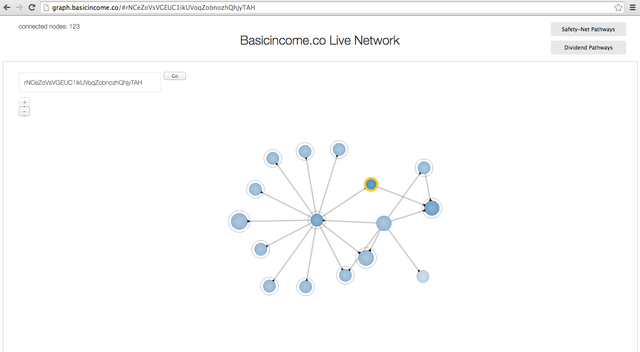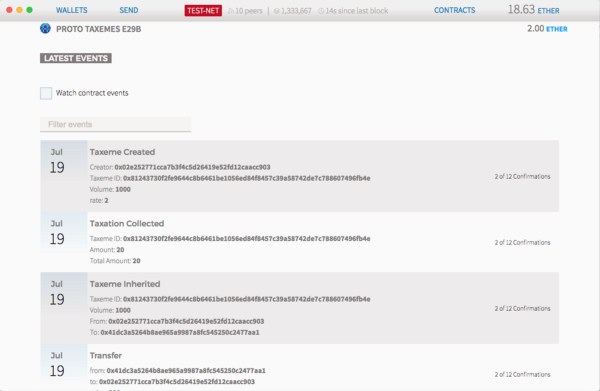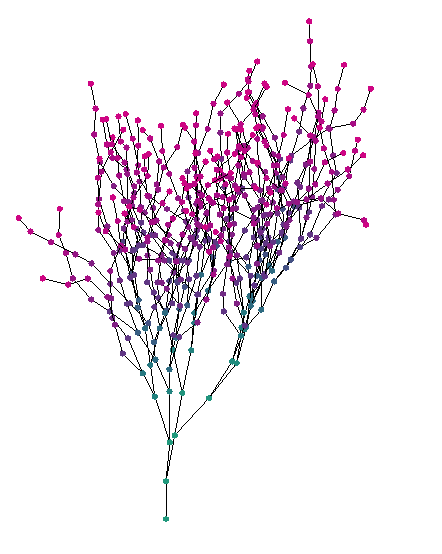Taxemes as the Governance layer of the Resilience protocol
After I had the eureka for a transaction-pathway based wealth redistribution scheme in 2012, my first thought was how the tax-rate of such a system should be governed. Since the system was, like money and currency, decentralized in that each node communicated autonomously with other nodes, there were no clear boundaries in which to place a central authority for tax-rates.
In that context, the idea of some form of P2P governance system, using mate choice, was born.
Trust-index
Taxemes were originally called "trust-index" and the idea was that they would regulate - P2P through mate selection - how hierarchical trust should be. With trust-indices at 0%, there would be zero wealth redistribution, and the network would operate as a capitalist network. With trust-indices at 100%, the network would instead operate as a gift economy, as debts were forgiven instantaneously.
The first PoC, with a central tax-rate
Taxemes only make sense in a system where the wealth redistribution pathways are decentralized, and so, the first PoC was designed to show what I call swarm-redistribution, using dividend pathways and branching schemes, and using a central tax-rate mostly because at the time in 2014, smart-contracts did not exist and it was difficult to implement Taxemes.

The second PoC, Taxemes without dividend pathways
With smart-contracts, it became possible and easy to implement arbitrary rules in transactions, programmable money, and I wrote a PoC for Taxemes, https://medium.com/@resilience_me/try-out-proto-taxemes-c0d27f3ae36a
Using Ethereum-wallet as a GUI, you can use it to see what it feels like to spread and to be infected with Taxemes.

State-technology 2.0
The word govern comes from kyber, which means to steer or navigate. We are used to thinking about governance as something that is done by centralized control, but that is mostly because the representative government of the nation-state was centralized out of resource limitations.
With new state-technology, where Ethereum is the first example of a state-technology 2.0, it becomes possible and even trivial to design all sorts of decentralized governance systems which were just not possible to imagine in the nation-state era.
Another word which comes from the root kyber is cybernetics, which looks at control systems and regulatory systems in both machines and living things, and I would say that the control systems of the future are going to look more like those we find in nature than those of our species early experiments with governance.
To remix what Rachel Armstrong said, any sufficiently advanced society is indistinguishable from nature.
Taxemes as the Governance layer
Taxemes are conceived to be the governance system of the Resilience protocol. It is a simple system, which produces emergent effects and scales organically, and which can self-balance trust to anywhere from capitalism to a gift economy, and will probably balance somewhere in between those.
Each transaction you make will, over time, grow a branching scheme which will give back rewards to you. These rewards flow through the dividend pathways of the branching schemes, which similar to blood vessels have different widths based on the Taxeme which was used to extract tax from the transaction which created the dividend pathway.

Decentralized governance systems have an expanded control-input area
Nature chose natural selection as its governance system because the decentralized control led to higher forms of regulatory mechanisms. The mechanism of mate choice, that two organisms independently examine and inspect the other, produces transcendent effects which are bigger than the sum of its parts, which gave rise to life, and Taxemes as I've conceived them are roughly based on something similar.